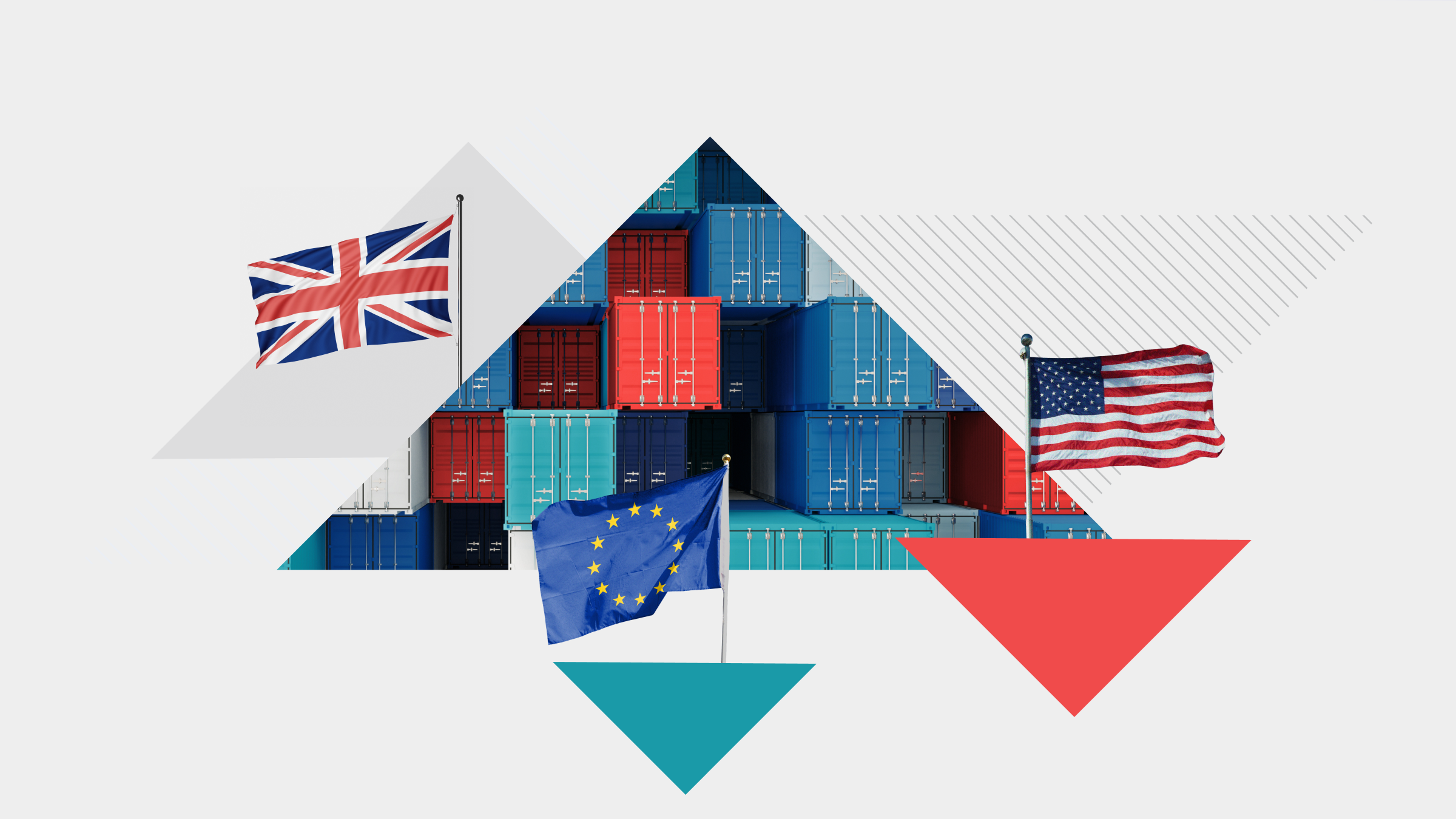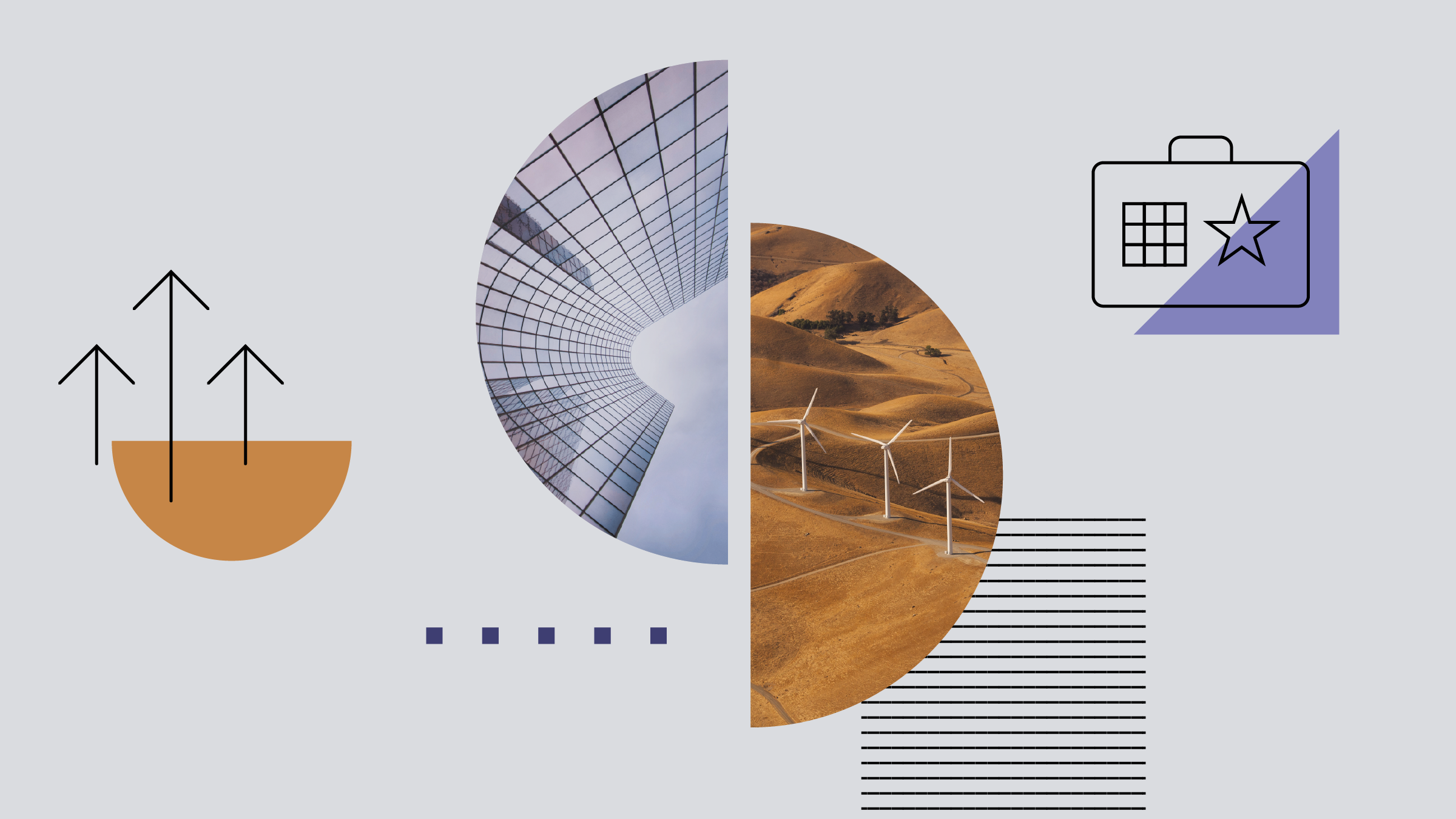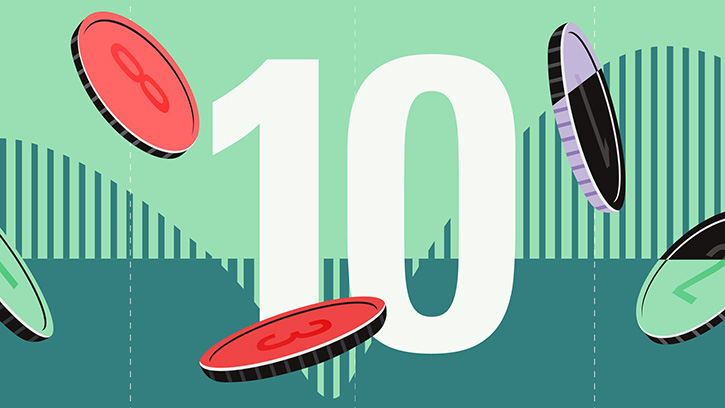Rolle im Portfolio
By providing exposure to German mid-cap stocks, iShares MDAX (DE) can serve as a tool for asset allocators looking to control their market capitalisation and style exposures. This fund is suitable as a core holding in a German or European equities allocation given its broad diversification across companies and sectors. However, despite the fact that all the index’s constituent are domiciled in Germany, many of them are multinational companies generating revenue around the world. For instance, the largest index constituent, EADS, generated only about 40% of its revenue in continental Europe in 2011, with Asia and Oceania representing about a third. Many other index constituents generate less than 50% of their revenue within Germany. As such, this investment can also be seen as a passive play on the global economy with a German bias.
The MDAX index is fairly diversified from the perspective of individual stocks, with the top 10 holdings accounting for about 50% of the index’s value, compared to about 70% for the DAX. The MDAX also offers a different industry and sector exposure, with industrial goods & services making up 36% of the MDAX, three times their representation in the DAX. However investors should be aware that mid-cap shares are more volatile than blue chips. The MDAX has exhibited a standard deviation of 26.1% over the last five years, compared with 23.1% for the DAX over the same period.
This fund can also act as a tactical tool to overweight mid-cap equities within a diversified European portfolio. It could be useful for those who want to place a bet on the near-to-medium-term prospects of this asset class as a whole under the belief that they represent good value compared to large-cap equities.
The ETF may be suitable for investors seeking exposure to what is a generally under-weighted segment of the market in most investor’s portfolios. According to some, the market for mid cap equities can be under-researched, under-followed, and generally less efficient than the market for small and large caps and therefore could potentially yield superior returns.
Fundamentale Analyse
Midcaps are often underweighted in European portfolios as investors and analysts tend to focus more on large- and small-cap companies. The MDAX has delivered a positive annualised return of 14.8% for the past 10 years, easily outpacing the annualised return of the DAX of 9.8% over the same period. The relative outperformance of midcap equities can be attributed mainly to differences in sector exposure versus the large cap benchmark as each sector is driven by different macroeconomic factors. Currently, the mid cap index has no exposure to banks whereas this sector represents about 6% of the DAX index. This seems to be beneficial given the debt crisis plaguing Europe and weighing on bank shares. Industrials have a far greater weight in the mid cap benchmark relative to the DAX Index. Given that the current economic outlook remains gloomy, this could weigh on mid caps’ performance in the near-term. However, the MDAX has also shown more volatility as they tend to be smaller, less diversified and less well-capitalised companies. This leaves mid-caps with a greater sensitivity to macroeconomic risks. Notwithstanding, we think that this fund contains strong, solid brand names and highly specialised companies like EADS, the European aerospace group, and Lanxess, the fourth largest chemicals group in Germany.
Industrial output in the Eurozone dropped by 1.4% in October, while it declined by 2.4% in Germany. The German economy ministry confirmed late November that the economy would weaken noticeably during the winter months as companies hold back on investments. In fact, companies like Siemens and Daimler recently announced large-scale cost-cutting programmes to boost their competitiveness. Germany’s Bundesbank also contributed to the generally gloomy outlook by cutting its economic growth forecast, partly on the negative effects of the still recessionary Eurozone peripheral countries on the German economy, something already highlighted in the European Central Bank’s economic outlook for the Eurozone. The central bank cut its 2013 GDP growth forecast to 0.4% y/y, down from the previous forecast of 1.6% published in June. Meanwhile, for the full-year 2012, the central bank expects the economy to expand by 0.7% y/y.
In any case, against the less positive general backdrop the German economy continues to throw some signs of strength. Perhaps anticipating the evolution of the ZEW index in December, the Ifo business confidence index unexpectedly rose in November to 101.4 after six straight months of decline. Moreover, the purchasing manager index (PMI) climbed to 50.5 in December, indicating a return to expansion territory for the first time since April. The increase was led primarily by the service sector.
While the Eurozone economy slipped into recession in the third quarter, Germany expanded by 0.2% q/q, driven by export and domestic consumption. However, the industry sector, the most important pillar of the German economy, continued to decline. Manufacturing production dropped by 3.3% in October as orders from within the Eurozone declined by almost 10%. The industry sector, excluding construction, accounts for about one fourth of the country’s GDP.
Indexkonstruktion
The MDAX index comprises 50 medium-sized German companies which are listed on the Prime Standard segment of the Frankfurt Stock Exchange and rank behind the 30 DAX components in terms of market capitalisation and exchange turnover. The MDAX is free float market capitalisation weighted. No single constituent is allowed to account for more than 10 percent of the index. Industrials is the most represented sector, accounting for 36% of the index's value, followed by chemicals (13%) and media (11%). EADS is the biggest component of the MDAX with a 11% weighting. The second and third largest stocks represented are Brenntag AG and Kabel Deutschland Holding AG.
Fondskonstruktion
iShares MDAX (DE) uses physical replication techniques to track the performance of the MDAX total return index. The fund buys all the securities within the index, in the same weightings. iShares may engage in securities lending within this fund to generate additional revenues for the fund. The lending revenues generated from this activity are split 60/40 between the fund and the lending agent BlackRock, whereby BlackRock covers the costs involved. To protect the fund from a borrower’s default, BlackRock takes collateral greater than the loan value. Collateral levels vary from 102.5% to 112% of the value of securities on loan, depending on the assets provided by the borrower as collateral. Additional counterparty risk mitigation measures include borrower default indemnification. Specifically, BlackRock commits to replace the securities that a borrower would fail to return. The indemnification arrangement is subject to changes, and in some cases without notice. Finally, BackRock limits the amount of assets that can be lent out by this ETF at 50%.Cash received as dividends from the underlying stocks is held in the fund’s income account until it is distributed to fund holders. Distributions are made on a quarterly basis. This dividend treatment can potentially create a drag on returns in upward trending markets as dividends are not reinvested into the fund. In practice this cuts both ways. It could also result in outperformance if the benchmark falls in the interim period.
Gebühren
iShares MDAX (DE) levies a total expense ratio of 0.51%. Other potential costs associated with holding this fund which are not included in the TER include rebalancing costs, bid-ask spreads and brokerage fees.
Alternativen
iShares MDAX (DE) is the only ETF that provides exposure to the German mid-cap equity market. Investors looking to invest in medium-sized companies in Europe could consider the iShares EURO STOXX Mid which offers exposure to eurozone mid cap stocks from the EURO STOXX Mid 200 Index. However Germany accounts for only 5% of the fund’s value, behind France. The sector composition is also different with industrials weighting 25%, followed by financials with a 18% weight.
Die in diesem Artikel enthaltenen Informationen dienen ausschließlich zu Bildungs- und Informationszwecken. Sie sind weder als Aufforderung noch als Anreiz zum Kauf oder Verkauf eines Wertpapiers oder Finanzinstruments zu verstehen. Die in diesem Artikel enthaltenen Informationen sollten nicht als alleinige Quelle für Anlageentscheidungen verwendet werden.

















